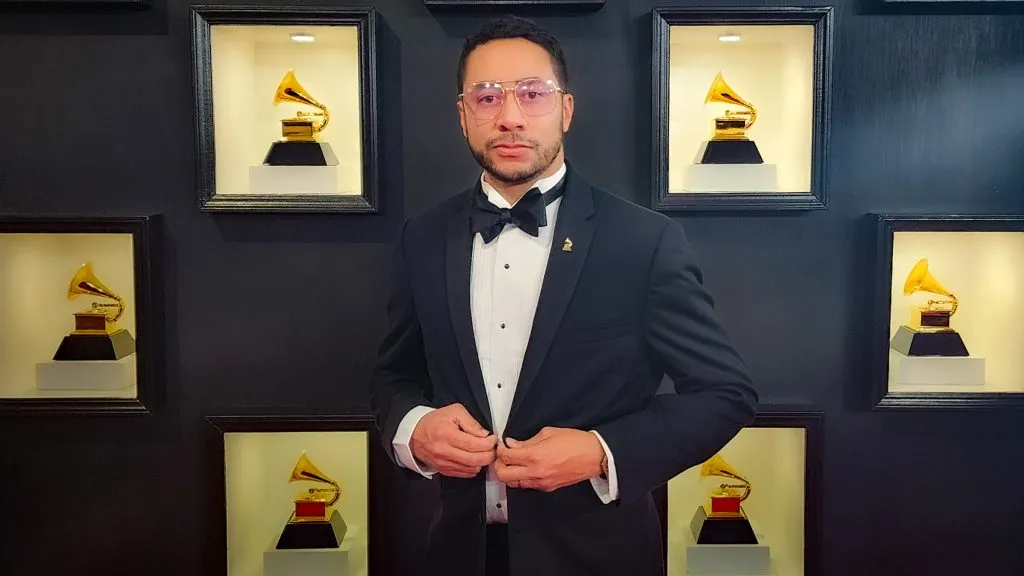Sound Credit CEO Gebre Waddell pictured at the 65th Grammy Awards, where he announced a $30 million advance facility for North American users’ neighboring rights royalties
Sound Credit’s Version 6 brings decentralized architecture, enhanced collaboration tools, AI-powered data enrichment, improved contract and catalog management, expanded export options, and many other features. Their goal: capture more metadata at the source, connect more artists with lost royalties, and help record labels, publishers, administrators, and indies accurately register for royalties.
Among the many dark sides of digital music distribution is the mountain of metadata that’s frequently left behind. Music files are unaccompanied by proper metadata and credits information during the creation process. With general-purpose file transfer services such as Dropbox, WeTransfer, and Google Drive lacking essential metadata recording fields within their collaboration tools, artists and studios often fail to accurately record metadata at the source.
Due to this missing focus on metadata infrastructure, the already enormous pile of lost and missing credits keeps getting bigger.
To say that this discrepancy in metadata is costly would be an understatement. The music industry estimates that over $1.4 billion of unclaimed royalties are left on the table every single year. As we’ve covered in depth, this broken metadata management system also distorts streaming data, robbing artists of crucial opportunities they could have received with proper crediting for their work.
In that soup, Sound Credit’s Version 6 is decentralizing the ingestion process, combining file transfer capabilities with metadata collection on the cloud.
Sound Credit says it has developed over 200 integrations with various supply chain points, and registers relevant information with royalty payment systems in real-time. The company partnered with DMN to give the music industry a comprehensive look at their latest Version 6 release.
The update allows more metadata to be captured from anywhere and at any time — from the moment content is recorded, and through every phase of production that follows. All the collected metadata is then aggregated into one central hub.
With a desktop app, mobile app, plug-ins for any DAW workstation, and even a kiosk, Sound Credit encourages contributors to enter credits before, during, or after a studio session.
The goal is to connect musicians with royalties by allowing easier access across apps, kiosks, and desktops. According to the company, all of these modalities can now ‘talk to one another,’ akin to a ‘Google Docs for Metadata’ or a ‘Dropbox for file storage and sharing’ — albeit with considerably more polished and specialized collaboration capability.
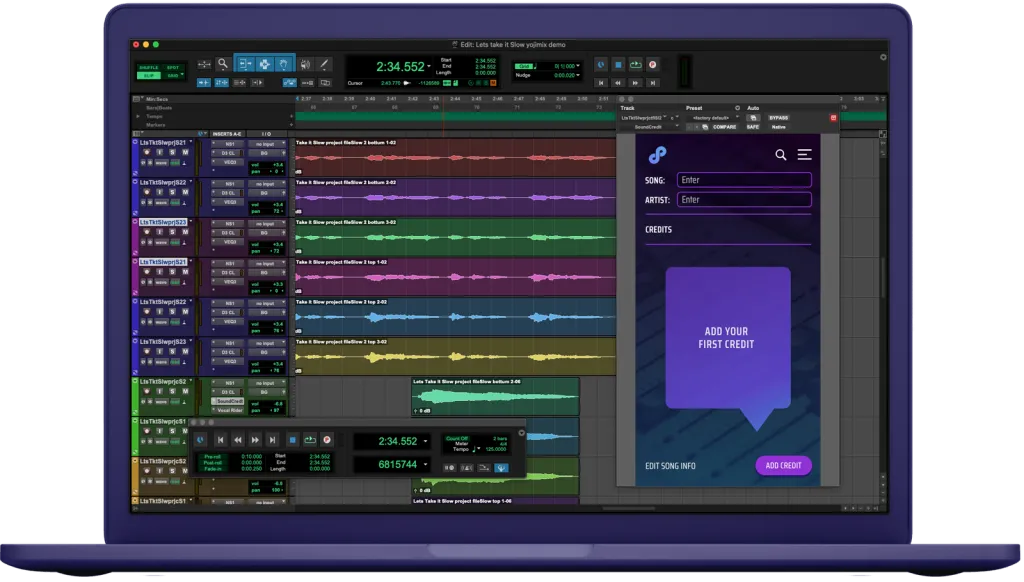
Sound Credit’s Workstation Plug-In collects credits immediately in the recording process.
With this decentralized cloud-based architecture, Sound Credit joins an ongoing mission to collect metadata at the place of origin — so it doesn’t get tangled later on. Placing everything on the cloud removes the possibility of inaccurate metadata entry. It also reduces the chances of that data remaining inaccurate for an extended period and mucking up everyone’s downstream payments.
Sound Credit’s founder and CEO, Gebre Waddell, explained that Version 6 emerged after pinpointing crucial problems faced by artists. “This upgrade provides premium features that raise the bar on prevalent standards within the music data landscape,” Waddell says.
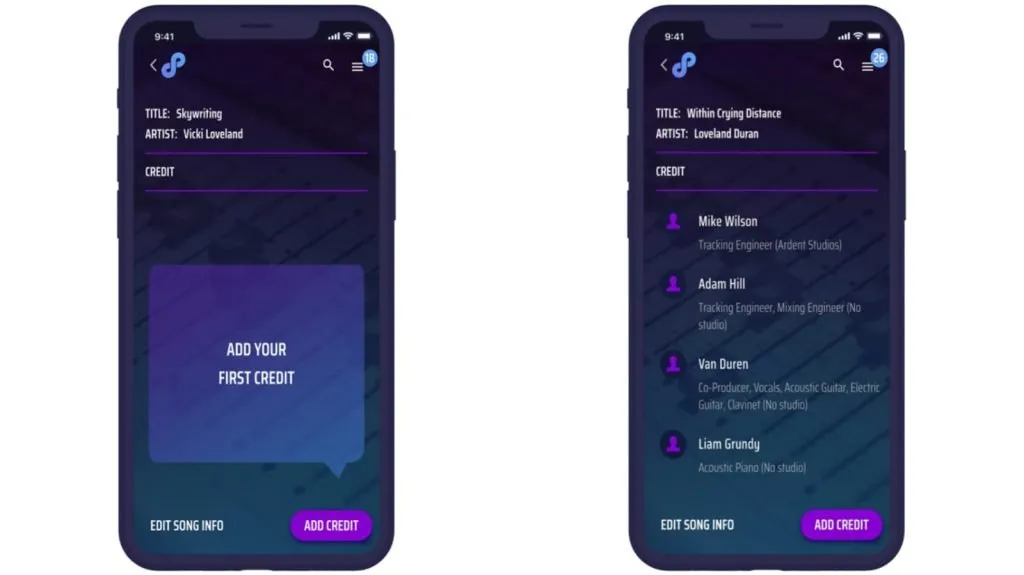
Sound Credit’s ongoing mission is to collect metadata at the place of origin — so it doesn’t get tangled later on.
With Version 6, fluid interactions and better collaboration opportunities appear to be taking center stage.
Users can invite people for collaborative metadata entry on a central storage and sharing hub, with all information collected from multiple endpoints and poured into one spot. Waddell touched upon this community aspect surrounding Version 6. “You can invite people and chat with them. You get notifications on your phone and desktop. It brings a sense of community and high flexibility so people can implement Sound Credit their way across a range of devices.”
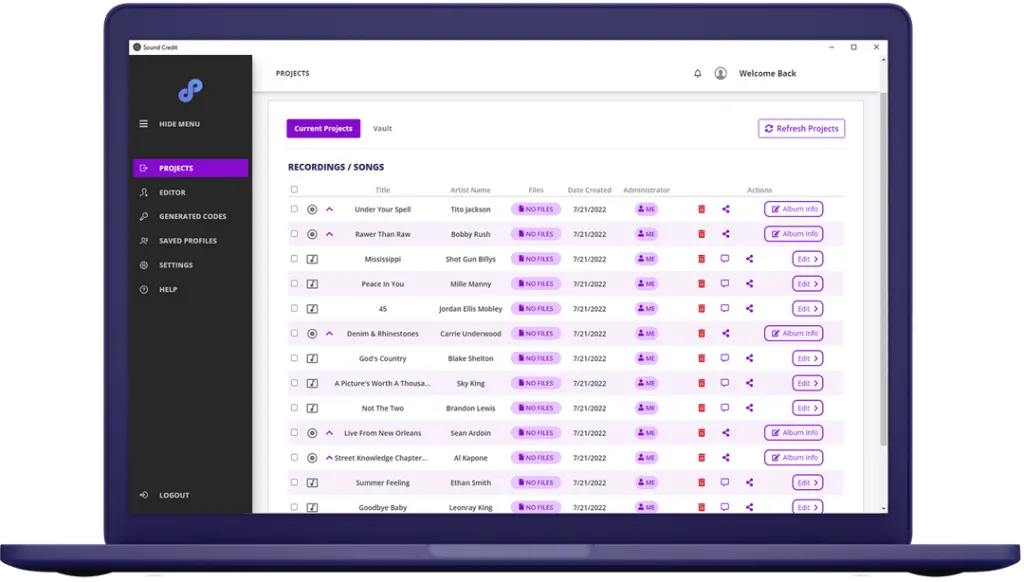
Unlike general-purpose file transfer services, Sound Credit provides essential metadata recording fields within collaboration tools.
According to Wadell, Sound Credit’s Playlist feature ‘completely shifts the way the music industry transfers files internally within the industry.’ This feature builds the bridge that connects recordings to the metadata behind them.
Uploading a track to a playlist automatically creates a project on the platform, displaying a ‘credit count,’ so users can start adding credits via desktop app or mobile. Everyone with access to the playlist can stream tracks on their app as if they’re on a streaming service, except this service is limited to those with access.
Every track on a playlist displays a ‘credit count,’ so users can start adding credits via desktop app or mobile. Wadell says, “It all happens with virtually no effort, in seconds.”
With a simple switchover to Sound Credit from a DAW, users can upload and immediately have a shareable playlist on their own private streaming service page — one that’s connected to a Sound Credit project. Everyone with access, including engineers, producers, record labels, or anyone else that’s part of the process, can view and update credit information. Any new credit entered will update on the cloud, and all collaborators with access to the music file will receive a notification. In essence, by always transferring with Sound Credit, users receive a gateway to every feature that captures data at the source — one collaborator at a time.
With streamlined uploads and playlist creation, the platform’s AI steps into the mix. AI-powered detection of artists and titles connects recordings to correct projects.
The AI mood detector scans lyrics and other metadata to determine a song’s musical mood, and an explicit content detector flags specific words and contextual references. This AI-powered data enrichment allows precise categorization, delivery of the right music, and accurate metadata.
With ease of access via any device, quick ISRC and GriD code generation, and the ability to export anywhere, Version 6 focuses on expanding metadata associated with music IP.
Sound Credit Version 6 enters the market with a complete core code rewrite that elevates the user interface, now boasting the visual polish of Salesforce and Hubspot — i.e., established multi-billion-dollar SaaS platforms.
According to the company, the platform’s previous versions contained more than 4 million lines of code. That spelled a serious rewrite process of the core Sound Credit code, though Waddell says substantially more collaborators are now using the platform. At present, Sound Credit counts 45,000 total users, with 15,000 active users.
The interface is simple and unfussy, making accurate metadata a matter of drag-and-drop for track reordering. Users can also conveniently view the number of credits entered for any given song.
The update also offers a Catalog Management feature for archiving older files in a ‘vault,’ allowing simplified segmentation to focus on current projects.
Sound Credit’s kiosk prioritizes current projects, placing them in separate ‘buckets’ for various studios and collaborators. Allowing specific access to relevant and involved parties leads to faster exports, assisting the data collection process at one core point of storage.
With expanded exports, Version 6 includes publishing label copy and song registration with ASCAP, BMI, and SOCAN. Sound Credit is also the first platform of its kind to provide split sheets with legally binding e-signatures.
When Version 4 was released in January of 2022, the platform had a patent-pending data hub method that would allow users to export to multiple formats after entering credits. This included union forms, label copy, and lyric sheets. With Version 6, Sound Credit is adding more compliance, contracts, and legal documents to the platform.
That includes producer agreements and side artist releases that help establish clear titles for recordings. There’s also a new, more simplified flow for union form exports — AFM B4, AFM B9, and SAG-AFTRA Session Reports — all of which can be exported directly from Sound Credit.
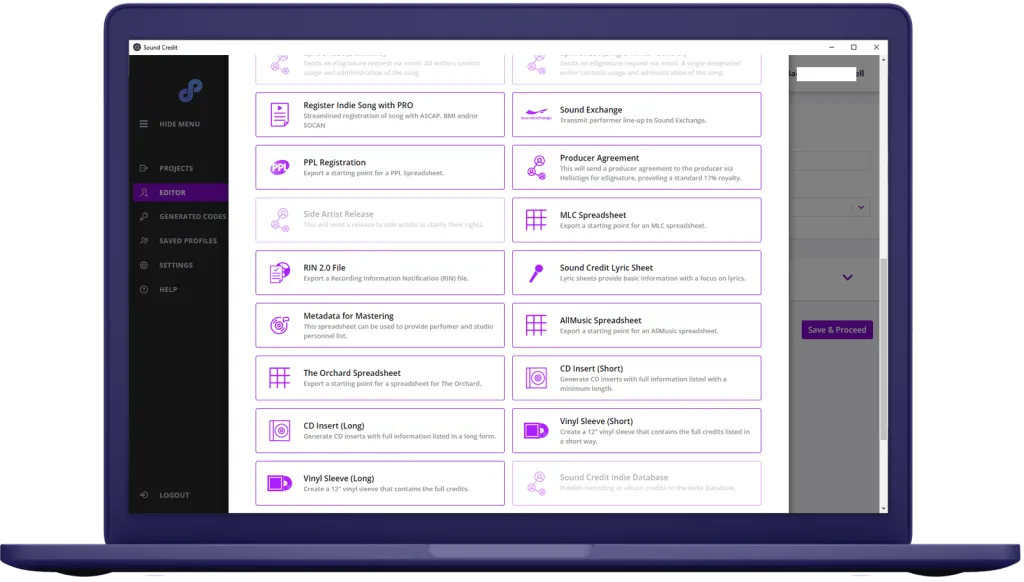
Sound Credit’s patent-pending export section allows users to Enter Once and Export Everywhere
“Sound Credit is critical for compliance, especially in this environment of all the things happening from the NMPA, the MLC, and numerous other organizations,” Waddell said, adding, “This is reducing liability and downstream workflow, benefitting artists, musicians, and songwriters.”
According to Sound Credit, the company has invested heavily in patents, aiming to further grease the wheels of metadata management and music file transfers.
Newly headquartered in a wholly-owned, historic, early 19th-century building adjacent to the Mississippi River in downtown Memphis, Sound Credit has longstanding partnerships with major music labels and publishers like Warner Music Nashville. Over the years, the company has garnered serious buy-in for its crediting solutions.
The release of Sound Credit’s Version 6 and a greater awareness of metadata appears like a step forward. At the very least, artists, labels, publishers, producers, songwriters, and other IP owners and collaborators have a better shot at getting paid and recognized for their music.
At the 65th Grammy Awards, Sound Credit’s CEO Gebre Waddell announced a partnership with PPL, which will now allow Sound Credit’s North American users to collect neighboring rights royalties. PPL represents over 100,000 performers and record labels, including John Legend, Anderson .Paak, and Rita Ora.

